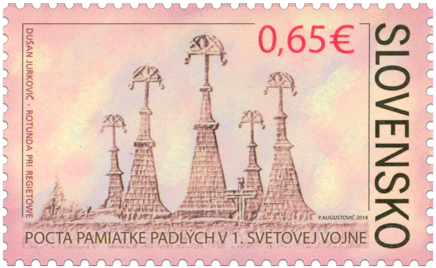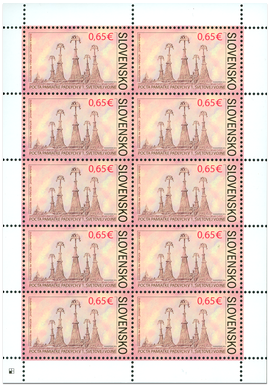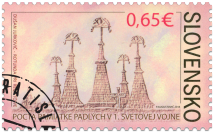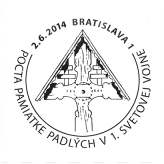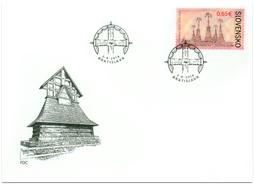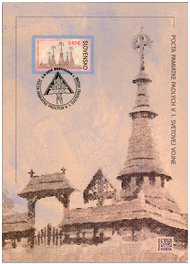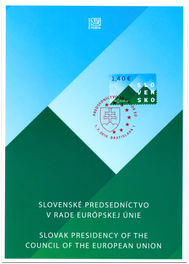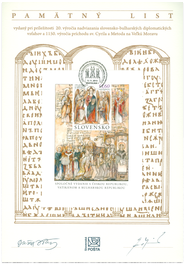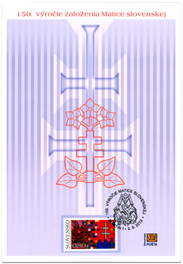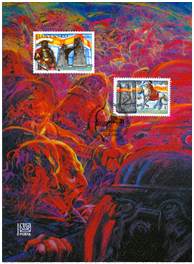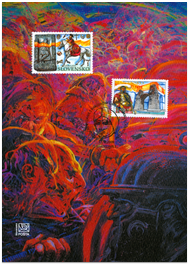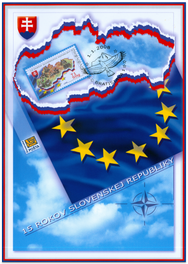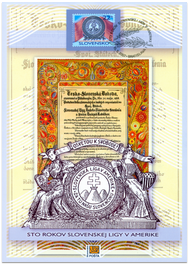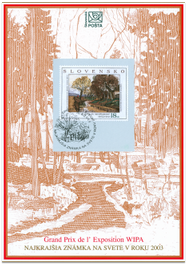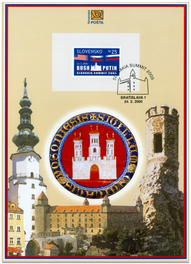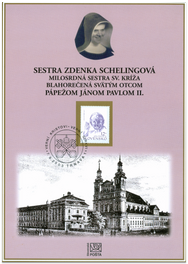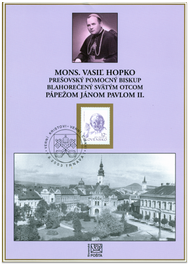565 Date of issue
02.06.2014 Face value
0.65 € Sell price
0.65 €
The assassination of the Austria-Hungarian successor to the throne, Franz Ferdinand d’Este, in Sarajevo on June 28, 1914 released accumulated clashes existing between individual European powers grouped into the two enemy camps of the Triple Entente and the Triple Alliance. Only in a month, on July 28, 1814, Austria-Hungary declared war on Serbia, which was accused of plotting the assassination. In order to protect Serbia, Russia reacted against Austria-Hungary, which was immediately followed by declaration of war on Russia by Germany. In the first decade of August 1914, basically all more significant European states except for Italy, which as the Triple Alliance member entered the war for the Triple Entente no sooner than in 1915, had already been at war. The war took place on three continents, in the Mediterranean and oceans. World War I represented the first great war of the industrial age, however, tactical maturity of armies did not correspond to this fact. That is why it quickly turned into a long trench warfare in which soldiers were dying in thousands without any noticeable sense or military success. Consequences of the war were not felt only by soldiers in fronts, but also by civilian population in its background. Combat operations were terminated by signing an armistice with Germany on November 11, 1918. At the end of the war, the political system of Europe was completely ruined. The four empires (Russia, Germany, Austria-Hungary, and Ottoman Empire) ceased to exist, new national states were formed and imperialist peace of Versailles created conditions for a new war.
Approximately ten million soldiers and seven million civilians died in World War I. From the territory of Slovakia, approximately four hundred thousand soldiers, of which almost seventy thousand were killed, were dressed in a military uniform. Already during the war, the Austria-Hungarian administration authority hired several architects who were designing memorials for the fallen on World War I battlefields. Also the significant Art Nouveau Slovak architect Dušan Jurkovič was among the chosen ones. In the Western Carpathians, mainly in the territory of today's Poland, Jurkovič constructed several memorials which inspired not only the postage stamp (Regietów), but also the first day cover (Przełęcz Małastowska). The special postmark is based on the cross from Regietów. Through the postage stamp issuance, Slovenská pošta, a.s. memorialises senseless victims of the war as a memory and warning for the future.
Anton Hrnko
Similar products
055 PaL 614/16 Date of issue
01.07.2016
053 PaL 597/15 Date of issue
23.10.2015
042 PaL 542/13 Date of issue
05.11.2013
041 PaL 544/13 Date of issue
02.08.2013
036 PaL 460/09 Date of issue
11.09.2009
035 PaL 459/09 Date of issue
11.09.2009
027 PaL 413/08 Date of issue
01.01.2008
020 PaL 396 /07 Date of issue
15.05.2007
018 PaL 294/05 Date of issue
10.06.2005
016 PaL 348/05 Date of issue
24.02.2005
010 PaL 307/03 Date of issue
07.09.2003
009 PaL 307/03 Date of issue
07.09.2003
© 2024 POFIS - Postal philatelic service. All rights reserved

